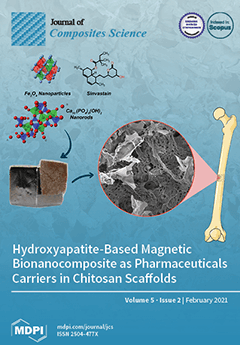Open AccessArticle
Removal of Pb(II) Ions from Aqueous Solution Using Modified Starch
by
O. H. P. Gunawardene, C. A. Gunathilake, A. P. S. M. Amaraweera, N. M. L. Fernando, A. Manipura, W. A. Manamperi, K. M. A. K. Kulatunga, S. M. Rajapaksha, A. Gamage, R. S. Dassanayake, B. G. N. D. Weerasekara, P. N. K. Fernando, C. A. N. Fernando and J. A. S. C. Jayasinghe
Cited by 24 | Viewed by 3855
Abstract
In this study, two types of modified cassava starch samples (MCS and MWS) prepared from commercially available native cassava starch (NCS) and native cassava starch extracted using the wet method (NWS) were investigated for the removal of Pb(II) ions from aqueous solutions. MCS
[...] Read more.
In this study, two types of modified cassava starch samples (MCS and MWS) prepared from commercially available native cassava starch (NCS) and native cassava starch extracted using the wet method (NWS) were investigated for the removal of Pb(II) ions from aqueous solutions. MCS and MWS samples were synthesized under acidic conditions using Pluronic 123 as the structure-directing agent and tetraethylorthosilicate (TEOS) as the chemical modifying agent. Modified starch samples were characterized using Fourier transform infrared (FTIR) spectroscopy, thermogravimetric analysis (TGA), X-ray Diffraction (XRD), and a nitrogen (N
2) gas adsorption–desorption analyser. MCS and MWS showed enhanced thermal stabilities upon acid hydrolysis and chemical modification. The effects of contact time and initial Pb(II) concentration were studied through batch adsorption experiments. Adsorption kinetics followed the pseudo-second-order kinetic model. The equilibrium adsorption data were analysed and compared by the Langmuir and Freundlich adsorption models. The coefficient correlation (R
2) was employed as a measure of the fit. The Langmuir model fitted well with equilibrium adsorption data, giving a maximum Pb(II) adsorption capacity of 370.37 and 294.12 mg/g for MWS and MCS, respectively. Modified samples exhibited a higher desorption efficiency of over 97%. This study demonstrated that modified starch could be utilized for Pb(II) removal from industrial wastewater.
Full article
►▼
Show Figures





